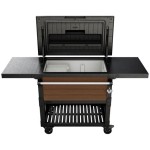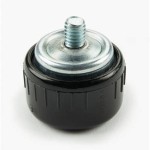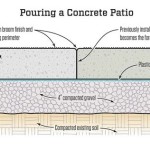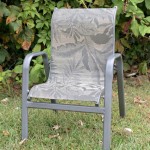Natural Gas Heaters for Patio
Outdoor spaces have become increasingly valuable extensions of homes, providing areas for relaxation, entertainment, and enjoyment. Extending the usability of these spaces into cooler months often requires supplemental heating. Natural gas patio heaters offer a convenient and effective solution for maintaining comfortable temperatures outdoors, allowing individuals to enjoy their patios and decks year-round.
Key Features of Natural Gas Patio Heaters
Several factors contribute to the popularity and effectiveness of natural gas patio heaters:
- Consistent Heat Output: Natural gas offers a steady and reliable fuel source, ensuring consistent heat production.
- Cost-Effectiveness: Compared to electric or propane heaters, natural gas often provides a more economical heating solution over time, especially for frequent use.
- Convenience: A direct connection to a natural gas line eliminates the need for refilling propane tanks or managing extension cords, offering a hassle-free operation.
Types of Natural Gas Patio Heaters
Natural gas patio heaters are available in various styles to suit different needs and preferences. Understanding these distinct types can assist in selecting the most appropriate heater.
- Standing Heaters: These freestanding models are commonly used and offer portability within the patio area. They typically feature a base, a pole supporting the heating element, and a reflector to direct heat downwards.
- Wall-Mounted Heaters: Designed for permanent installation on a wall or other vertical surface, these heaters save space and offer a more streamlined aesthetic.
- Tabletop Heaters: Smaller and more compact, tabletop heaters provide localized warmth for smaller gatherings or intimate settings.
- Built-in Heaters: These heaters are integrated into a patio’s design, often incorporated into overhead structures or pergolas, offering a seamless and aesthetically pleasing heating solution.
Heat Output and Coverage Area
Choosing the right heater involves considering the size of the area to be heated. Manufacturers provide British Thermal Units (BTUs) ratings, which indicate the heater's heat output. A higher BTU rating signifies greater heat output and coverage.
- Calculating Heating Needs: Accurate assessment of the square footage of the patio and consideration of local climate conditions helps determine the necessary BTU output for effective heating.
- Heat Distribution Patterns: Different heater designs distribute heat in various patterns, impacting the effective coverage area. Understanding these patterns ensures optimal placement for maximum warmth.
Safety Considerations for Natural Gas Patio Heaters
Safety is paramount when operating any heating appliance. Adhering to safety guidelines ensures the safe and proper use of natural gas patio heaters.
- Professional Installation: Natural gas lines and connections should always be installed by a qualified and licensed professional to guarantee safe and compliant installation.
- Ventilation: Adequate ventilation is essential to prevent the buildup of carbon monoxide, a colorless and odorless gas. Heaters should never be used in enclosed or poorly ventilated spaces.
- Clearance: Maintaining appropriate clearance around the heater is critical to prevent fire hazards. Manufacturers provide specific clearance guidelines for combustible materials.
- Regular Maintenance: Annual inspections and maintenance by a qualified technician are recommended to ensure the heater is functioning correctly and safely.
- Safety Shut-off Valves: Heaters equipped with safety shut-off features, such as tilt switches or oxygen depletion sensors, offer added safety in case of accidental tipping or reduced oxygen levels.
Choosing the Right Natural Gas Patio Heater
Selecting the ideal natural gas patio heater requires careful consideration of several factors to ensure optimal performance and satisfaction.
- Budget: Establishing a budget helps narrow down the options and prioritize features within a specific price range.
- Style and Aesthetics: The heater’s design should complement the existing patio décor and personal preferences.
- Features and Functionality: Features such as adjustable heat settings, remote controls, and timers enhance convenience and control.
Installation and Maintenance
Proper installation and regular maintenance are essential for the longevity and safe operation of natural gas patio heaters.
- Professional Installation: Engaging a qualified and licensed professional ensures the heater is connected correctly and safely to the gas line.
- Maintenance Schedules: Regular cleaning and maintenance according to the manufacturer’s instructions optimize performance and prevent potential problems.
- Winterization: In colder climates, proper winterization procedures protect the heater from damage during freezing temperatures.
Regulations and Permits
Local regulations and permitting requirements often apply to the installation of natural gas appliances. It’s essential to check with local authorities before installation.
- Building Codes: Adherence to local building codes and regulations ensures safe and compliant installation.
- Permitting Processes: Obtaining necessary permits before installation is essential to avoid potential fines or complications.

Stainless Steel Natural Gas Patio Heater 41 000 Singapore Ubuy

Natural Gas Patio Heaters Sylvane

The 5 Best Outdoor Patio Heaters Of 2025 Reviews By Wirecutter

Outdoor Patio Heaters Gas Electric Portable Wall Mount

Costway 11000 Btu Portable Natural Gas Patio Heater Propane A1q2 10n036

Best Patio Heaters 2024 Tried And Tested For All Gardens The Independent

Outdoor Patio Heaters Gas Electric Portable Wall Mount

Gas Patio Heaters Outdoor Propane Grillio Com

Calcana Standard 20 Outdoor Patio Heater Natural Gas
.jpg?strip=all)
Sunpak S34 48 Inch 34 000 Btu Natural Gas Infrared Patio Heater Stainless Steel S Nat Bbqgrills Com








